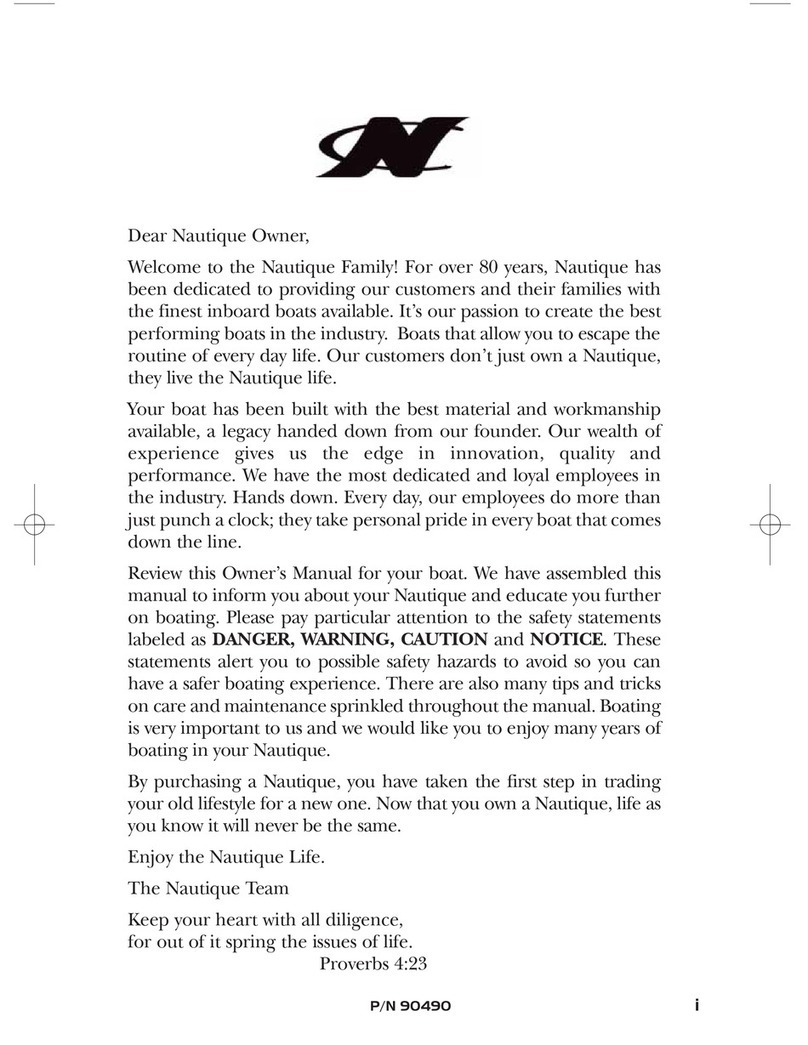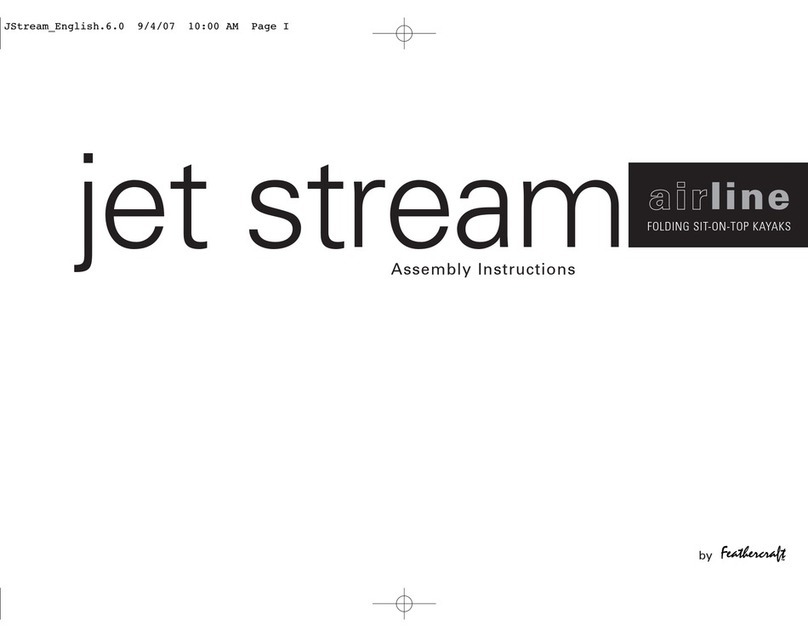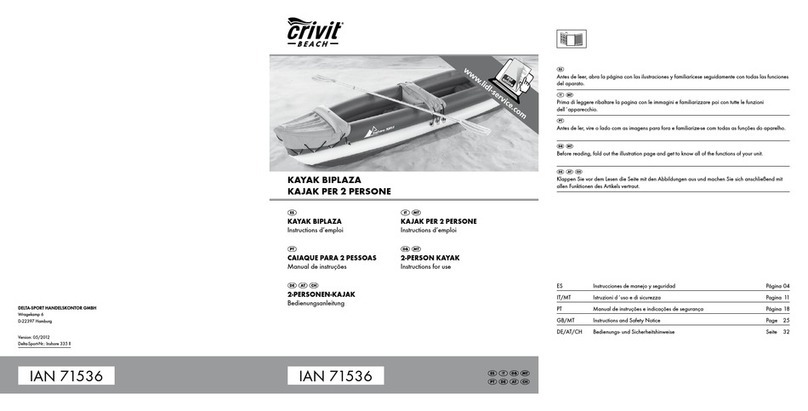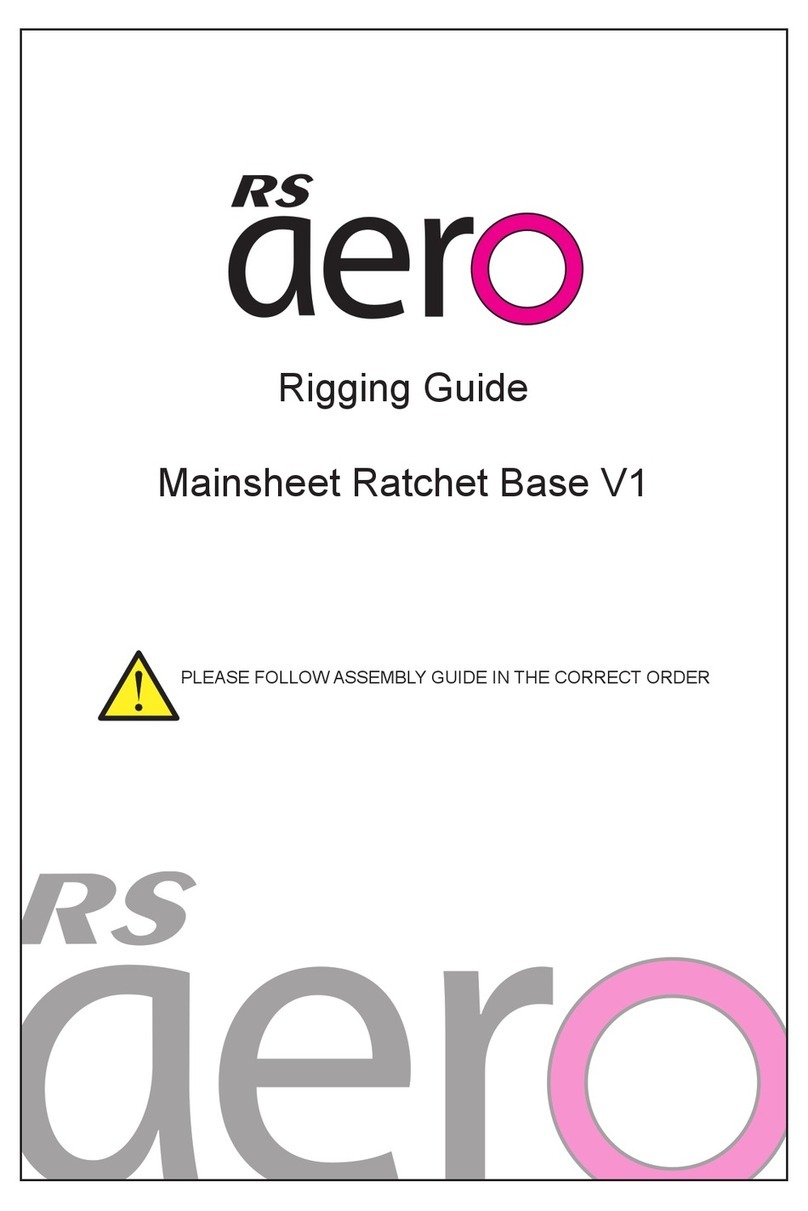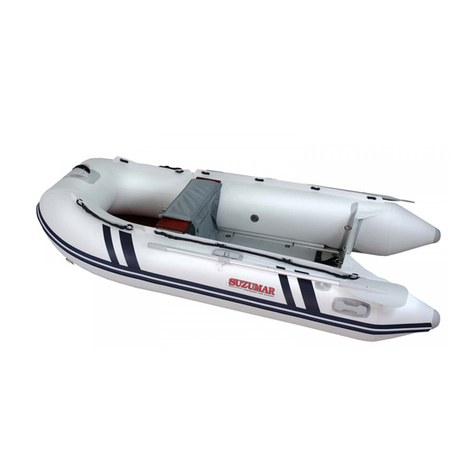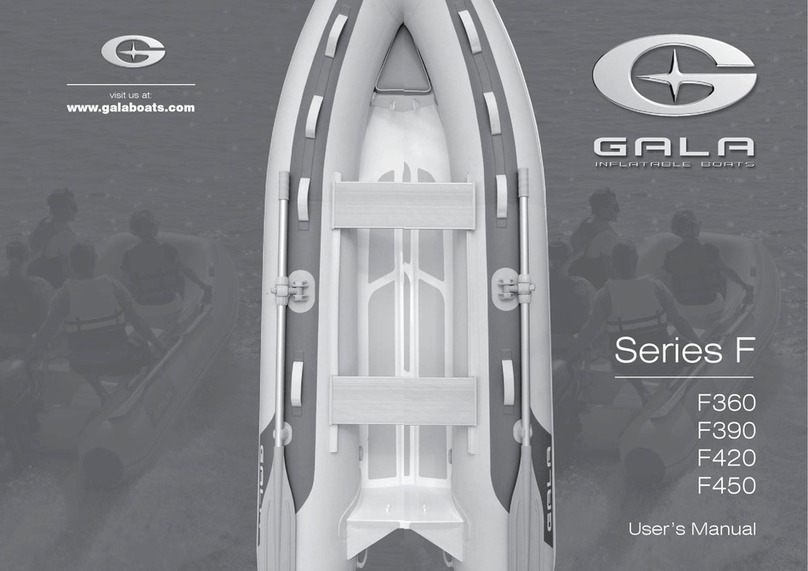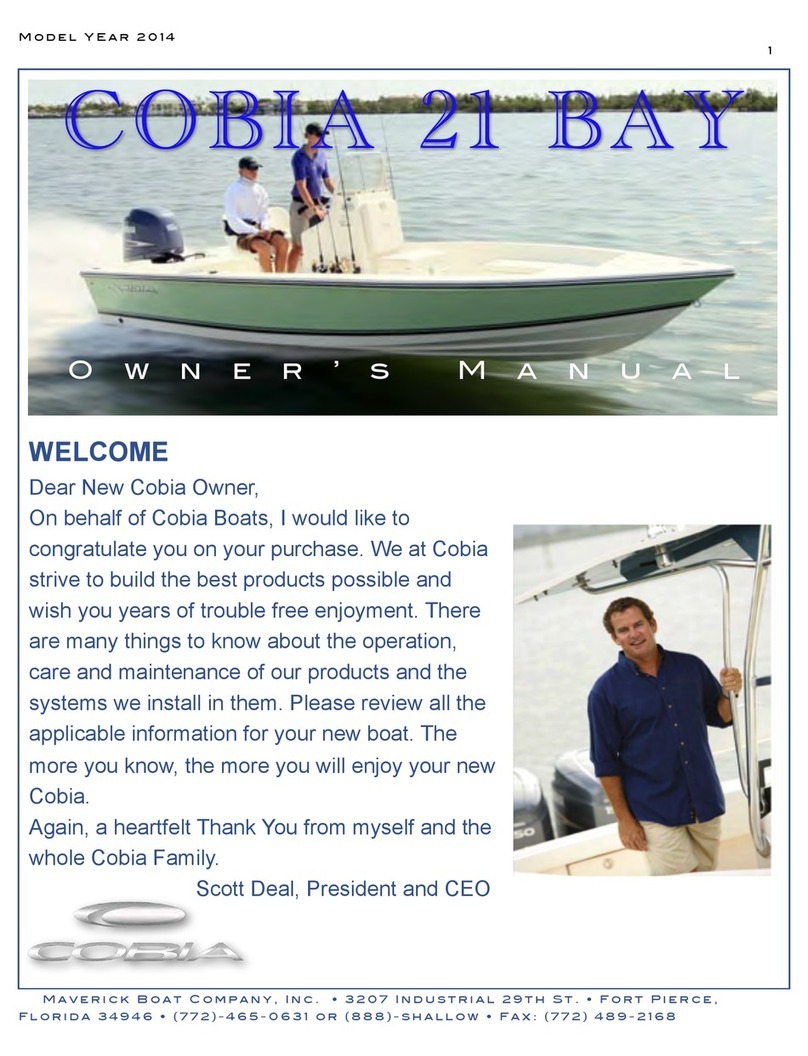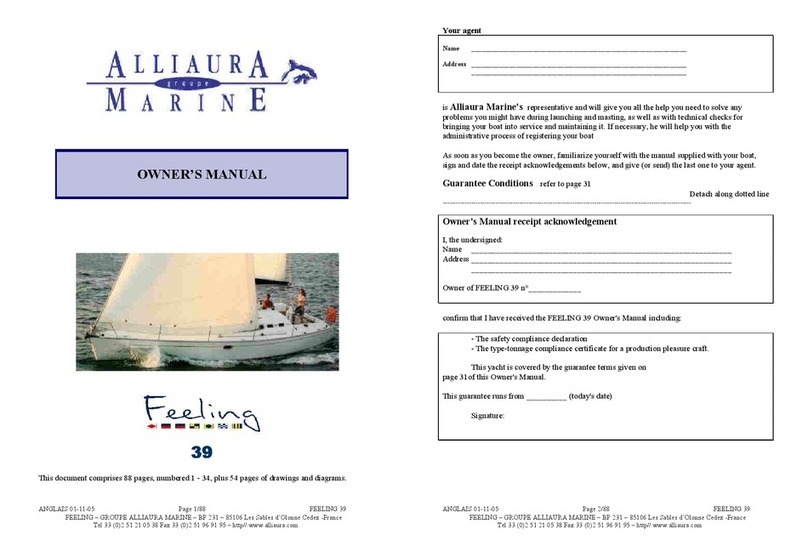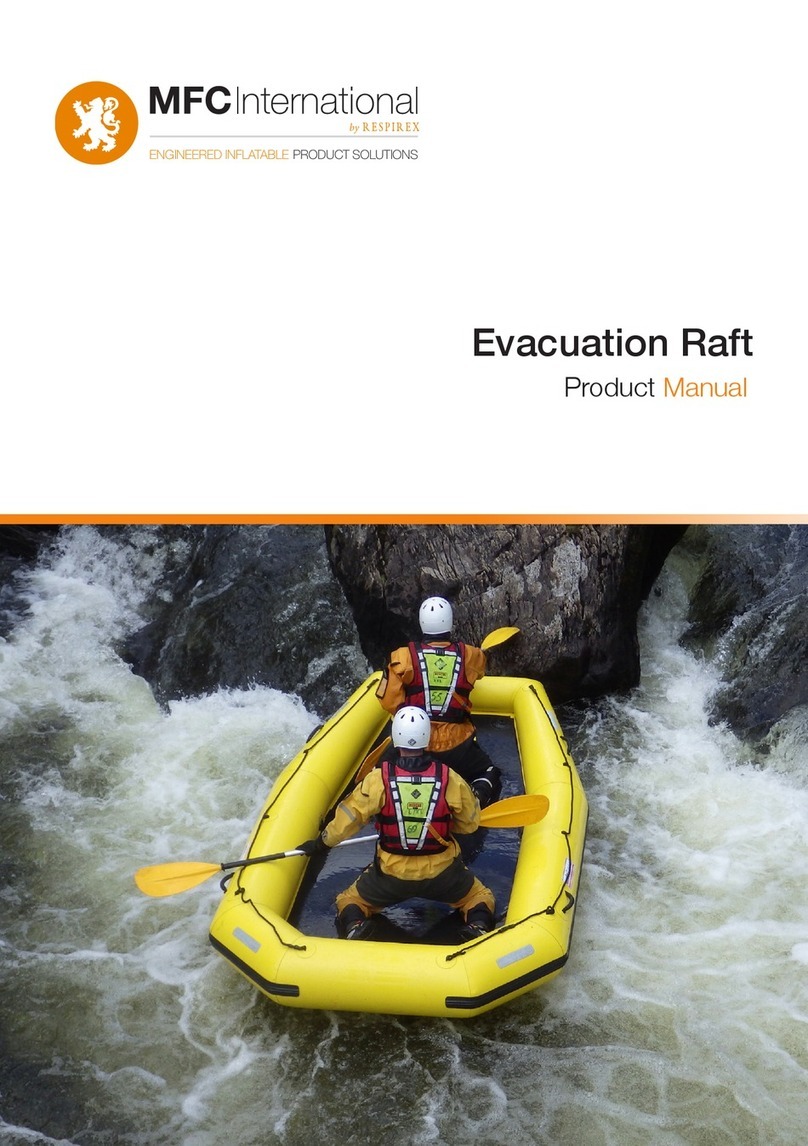Nortik Scubi 3 User manual

Assembly Instruction - nortik scubi 3
recreational kayak

2
Assembly Instruction - nortik scubi 3
Dear customer,
You have purchased a nortik scubi 3 – an innovative hybrid kayak for recreational use. With
great performance, little packing size and weight for a boat of this size, it is extremely
versatile in use.
The assembling instructions are very detailed and almost every step is illustrated. You will
notice that it will help you at one point or another. After a few times and with a little practice
you won’t need the manual anymore.
The experience shows that the first assembly needs more time than you will need later and
we ask you to assemble the boat step by step according to this instruction. After some
practice, you will assemble the nortik scubi 3 easily within 15 minutes!
If you have any questions, your dealer will be happy to assist you. Otherwise, you can also
contact us directly - as an importer (call: 0049/731/4007675, mail: kontakt@nortik.de).

3
1) Overview parts
1) 1x Hull
2) 2x Stem element (bow
and stern = identical)
3) 5x Keel rod
4) 6x Cross rib
(A & B under the front seat,
E & F under the back seat.
DIFFERENTIATION:
A=narrower/deeper than E,
B=wider/lower than F
C&D= identical)
5) Packing bag (no pic)
6) Repair Set with adapter for
valves (no pic)
7) Double action pump (no
pic)
2) Markings
All keel rods have little marks
with arrows. Sort the rods in a
way that all arrows point in the
same direction.
The arrow always points in
direction of the bow.
On the first rod (1) the marking
is right in the front. On the last
rod (5) it is in the back.
#1 Marking in the front
#2 Hemispherical end
#3 Riveted half tube
#4 Only the clip
#5 Arrow in the back
1)
2)
3
)
4
)
A
B
C + D
E
F
#1
#2
#3
#4
#5

4
3) Assembly
General proceeding: First you assemble the keel rods and the stem and insert them into the
hull. Then mount the cross ribs and at last inflate the sponsons.
First unfold the hull and take out
one of the stem elements (they
are identical).
Insert the stem element as far
as possible into the stern.
Fold up the flexible rod and clip
it to the cross tube, attached to
the hull.

5
Take the keel rod #5 (the arrow
pointing towards the bow is on
the rearmost position) and push
it through the sleeve on the hull
before clipping it to the stem
element.
Push both as far as possible
into the stern. Make sure
everything sits centrally.
Take the keel rod #4 (two open
ends and a riveted clip) and
push it through the sleeve on
the hull (behind the middle seat)
towards the bow.
sleeve
stern
sleeve
stern
stern
sleeve

6
Push it then backwards
towards the stern through the
sleeve under the back seat.
Again, make sure everything
sits centrally.
Now the keel rod #3 (with a
riveted half-tube) is clipped to it.
Push it from the front under
the middle seat and clip it onto
keel rod #4.
bow
stern
stern
stern

7
Now install the second stem
element in the bow. Proceed
in the same way as in the stern
Slide the stem element as far as
possible into the bow.
Then fold the flexible rod
upwards and clip it from below
into the cross-tube installed in
the hull.
Install keel rod #1 (two open
ends and the arrow pointing
towards the bow is on the
forward position).
Push it from behind through the
sleeve on the hull before
clipping it to the stem element.
Again, push both as far as
possible into the bow. Make
sure everything sits centrally.
Take keel rod #2 (with a
hemispherical end) and push it
with the open end through the
sleeve under the front seat.
Then clip it onto the stem
element.
bow
bow

8
The keel elements of bow and stern are getting connected now and will so provide an
essential part of the longitudinal tension.
First make sure, that bow- and stern
element still are in a central position.
Then take out the split pin.
Pull up keel rod #2 and #3 with the riveted
half-tube on top.
IMPORTANT:
Do not grab the rods too close to the
ends, but at least a length of the riveted
half-tube away from it! (see picture on the
left)
Pull them both up, until you can fit the
lower (with hemispherical end) in the
upper (with the riveted half-tube) rod.
Make sure that bow and stern do not
twist sidewise, but stand as much as
possible upright.
Slowly push both rods downwards into the
hull. This is how the longitudinal tension is
provided by pressing the frame into the
hull.

9
Make also sure, not to twist the rods
while pushing them down.
If the rods are twisted, it can be difficult to
re-enter the split pin in the next step.
Push the split pin through the two rods …
…and put the rubber band around to
secure it.
Now install the cross ribs.
First take one of the two identical open
cross ribs C & D.
Push the boat skin a bit aside and place
the cross rib behind the middle seat
diagonally onto the clip on the keel rod.
(see picture on the left)

10
Then right it slowly up, while the clips
interlock.
When the cross rib sits upright, clip in the
tubes holding the seat on the back side of
it (see picture below).
Proceed likewise with the second cross
rib:
Join it diagonally to the counterclip on the
keel in front of the middle seat and right it
up.
Clip in the front of the seat tubes.

11
Now install the cross ribs E & F to the
back seat.
Proceed with cross rib E like before.
The closed cross rib F is placed behind
the back seat.
This one doesn't have a counterclip on the
keel. It is clipped directly onto it (see
picture on the left).
Follow the same procedure with cross rib A & B for the front seat.
4) Inflating the sponsons
The inflating valves have two positions, that you
can adjust by pushing and turning the white pin
in the middle.
In one position you can inflate and disconnect
the pump without letting the air out again.
If you want to deflate, push in the pin and do a
half turn. The valve stays open.
Now inflate the high pressure sponsons.
IMPORTANT:
There is an adapter for the filling valves in
the repair kit. Put it onto the double action
pump.
Then insert the adapter into the valve and
with a half turn screw it to it.
Best is first to inflate the lower sponson
on one side to around 50%, then on the
other side equally. Then change again
and fully inflate them in turns.
Proceed likewise with the upper
sponsons.
The ideal pressure is 0.2-0.25 bar (2.9-
3.63psi)
Do not exceed it!

12
IMPORTANT:
Your boat is equipped with overpressure valves (the two red valves in the stern).
These will let out air in case the pressure exceeds too much. It is a security mechanism for
the extreme case. Do not test it willingly, but follow the guidelines.
Your boat is now fully assembled and ready for action.
In the following there will be described further instructions for optional deck and rudder
system. At the end of the manual you will find more instructions for safety, disassembling and
stowing the boat into the packing bag.
5 ) Installing the deck
Mount the optionally available deck from
the stern. Place it in such wise, the deck
just covers the Velcro on the boat.
It will overlap a little in the back.
(see picture on the left)
Then mount it completely and make sure
to tauten it.
Then shove the overlap underneath the
black cover at the stern.
The two little tubes are the openings for
the tripping lines of the rudder system, in
case you want to use it.
The deck is fully installed. Now you can attach the sprayskirts, which come with the 3-person
deck. Also optionally available is a cockpit cover for the middle cockpit.

13
6) Installing the rudder system
Overview parts:
At the first assembling take the small
security ring (1.) off the rudder blade.
Then open the wing nut (2), put the
distance piece through the hole (3) and
reclose the wing nut.
Now place the rudder onto the cavity at
the stern and secure it with pin, by
pushing it through from above. Secure the
pin at the bottom again with the little ring.
Steering rope extension
2
x
Steering rope
Steering bar
Rudder
blade
Shackle
for
steering bar
C
arabiner
for Pull up
rope
Pull up rope

14
Take the pull-up clip (with Velcro
underneath) and lead the pull-up line
through it.
Then lead the two steering ropes through
the holes of the cross beam…
...and turn them around. They will lock
themselves by being tensioned.
Now lead the extensions of the steering
lines (with chains) from behind under the
cross rib of the middle seat.

15
Then lead the whole extension through
the loop.
Now you have attached the extension to
the cross rib.
Lead the two steering lines from behind
through the two D-rings, on which the
back rest is attached.
Now knot the steering line to the last chain
link of the extension. You can adjust the
length of the line to your requirements.
Then position the steering bar as you
favour and secure it with the shackles.
By pushing the bar with your feet you can
now change the direction of the rudder
blade.

16
The clip for pulling up the rudder blade
can be positioned as you like on the
Velcro.
Lead the end of the pull-up rope back
through pin and attach it to the rudder with
the carabiner.
7) How to use the nortik scubi 3 with 2 persons
If you use the nortik scubi 3 for two people, you can also remove the seat cloth from the
middle seat. To do this, open the two front brackets of the center seat, which hold the side
seat bars. For this you need an Allen key. Then you can remove the side seat bars and pull
out the seat cloth. If you want to do this frequently, you can also order two splints (similar to
the keel connecting pin).
Important: Always reinsert the side seat bars after removing the seat cloth. Also, please
leave the two cross ribs installed. Both ensure the necessary longitudinal and transverse
stiffness.

17
8) Instructions for disassembling
The disassembling corresponds the assembling in reverse order.
Before folding the hull, lay it out flatly.
Fully drain the air from the sponsons. You
can also do this with the supplied pump,
since it has a suction function.
Then fold the sides in the middle
(lengthwise) as shown.
Then fold the bow once.
Then, lift the skin up where the bow piece
is on top and fold the skin again (as
shown in the picture)
Then place the skin flat on the floor. The
bow piece is then at the bottom.
Then fold the stern part once.
And then fold the skin once again on the
skin, which is folded from the bow
So you can get the hull back into the bag
easily.
bow
bow
bow
is located
(
not visible) at the bottom
stern
stern

18
9) Care, Safety, Storage and further Information:
Salt water: If you want to use your boat in the brackish water / salt water, the treatment of the rod with
"CorroFilm" is absolutely recommended. Ask your local Dealer for it!
CorroFilm can be sprayed onto (and if necessary also in) the rods and generates a transparent, dry
protective film which protects the aluminum perfectly against the "attack" of salt water. Ask your dealer
about CorroFilm. Clean the rods and boat skin after exposing it to salt water (e.g. after the tour) with
sufficient fresh water.
IMPORTANT: If the boat is to be stored for a longer time, take the air out of the sponsons! A folding
boat should be built up and removed several times a year.
Ensure that the boat skin and rods are dry when packed and stored.
The boat skin is resistant to salt water. Nevertheless, it should also be cleaned with fresh water after
the return from a tour in brackish or salt water. Especially when sand or small stones can cause high
abrasion.
Please make sure to carry the boat not only by the handles, but also support it from the bottom, in
order to relieve the handles from tension.
Always wear a life jacket when you are using your boat on the
Waters! Beware of rapid weather changes!
IMPORTANT: If you are on tour for longer, be sure to check the air pressure in the sponsons. Air
expands when heated. The operating pressure must not be exceeded. In the case of doubt, be careful
to carefully let out some air.
Your boat is equipped with overpressure valves (the two red valves in the stern).
These will let out air in case the pressure exceeds too much. It is a security mechanism for the
extreme case. Do not test it willingly, but follow the guidelines.
You can store your nortik scubi 3 built up or disassembled in the bag.
Please make sure that your boat is not exposed to unnecessarily long heat. If it is built up, take the
pressure from the sponsons by deflating them a bit.
Repairing and reinforcements:
The PVC / PU skin can easily be repaired in case of abrasion, a small crack or hole with the included
repair kit.
- Cut a strip of PVC / PU material from the supplied repair kit.
Make sure that it extends generously over the damaged area.
- Round the corners of the strip with scissors or similar.
- Clean the strip and the area to be patched. Both must be free of grease.
- It is best to roughen the spot with a fine sandpaper,(but in a pinch it will also work without it)
- Apply a thin layer of glue on both surfaces
- Wait for the glue to dry slightly, then press the patch firmly onto the area to be repaired.
If you can make the repairing at home: Let the glue dry for an hour, place the patch on the spot, and
gently warm both with a hot air dryer. Then push the patch firmly onto the hull.
On tour: The nortik scubi 3 can be reused shortly after repair. However, the adhesive and protective
effect still improves within 12 hours when the adhesive is completely dried. The sponson can be
repaired in the same procedure as described above. Please pay attention to a clean, grease-free
surface.
Your nortik scubi 3 is equipped with a keel strip. However, you can apply additional reinforcements
at much stressed points. Depending on the type of use, other keel strips or partial reinforcements of
the skin are recommended. If necessary, ask for it in specialized dealers.

19
For more information about your and other products, sources of supply and downloads at
any time:
Other Nortik Boat manuals
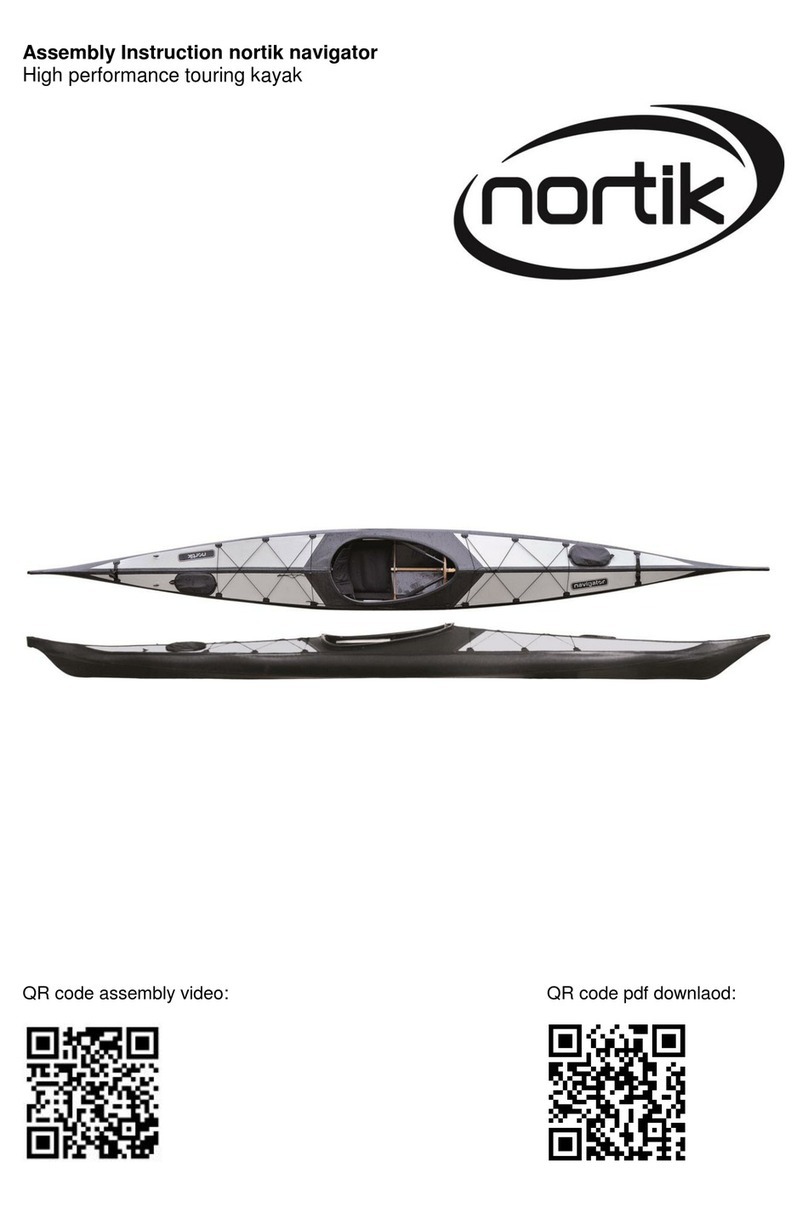
Nortik
Nortik Navigator User manual
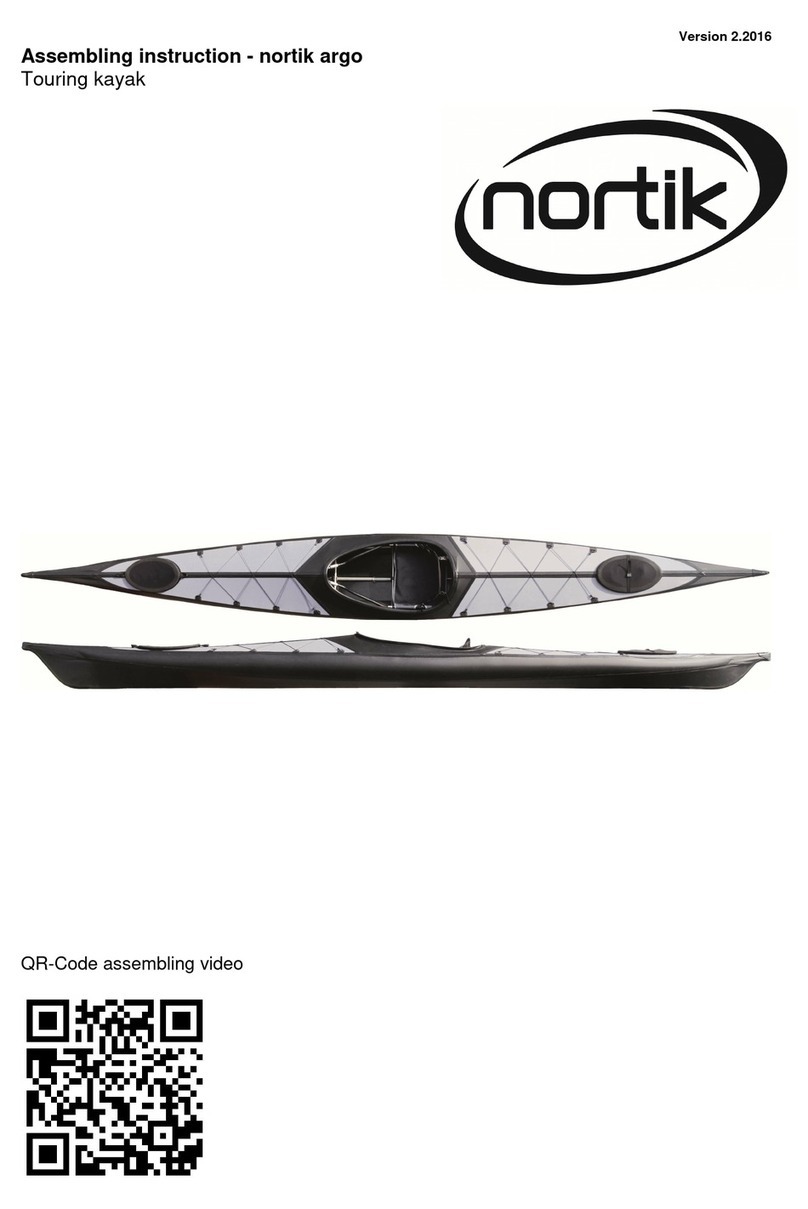
Nortik
Nortik ARGO User manual
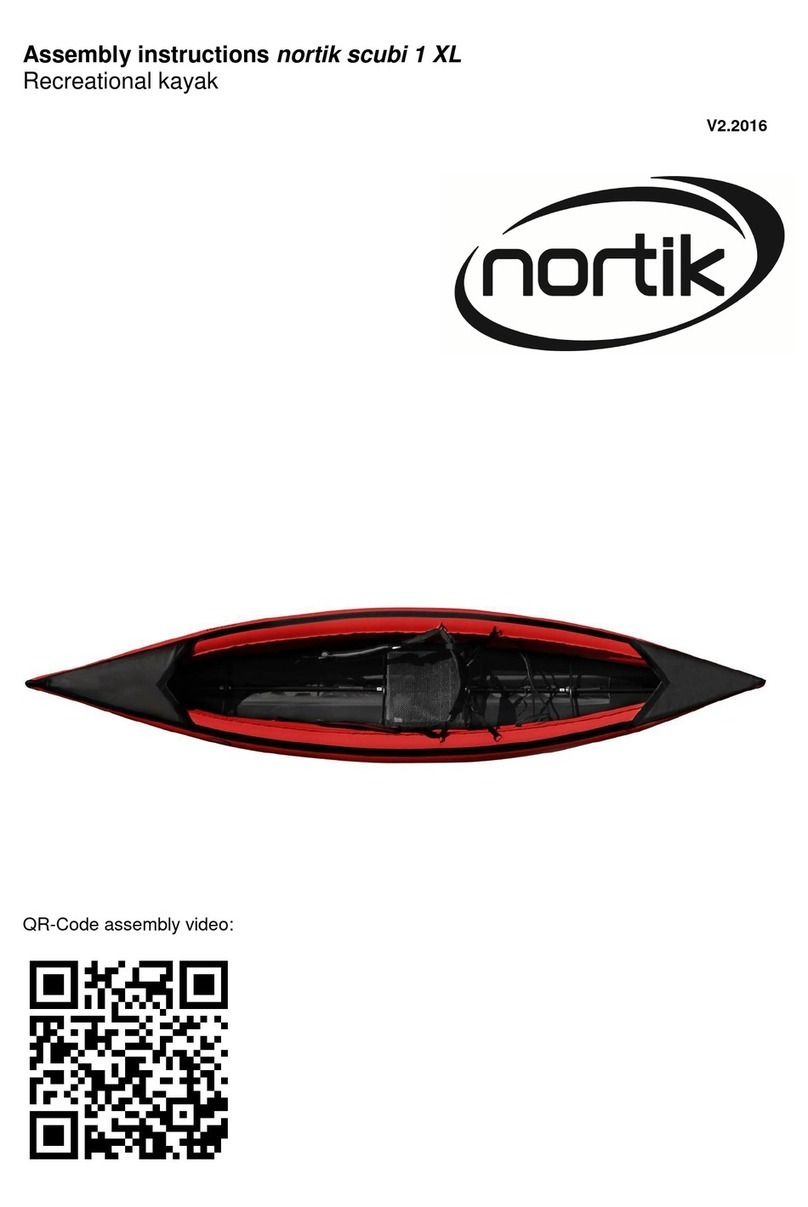
Nortik
Nortik scubi 1 XL User manual
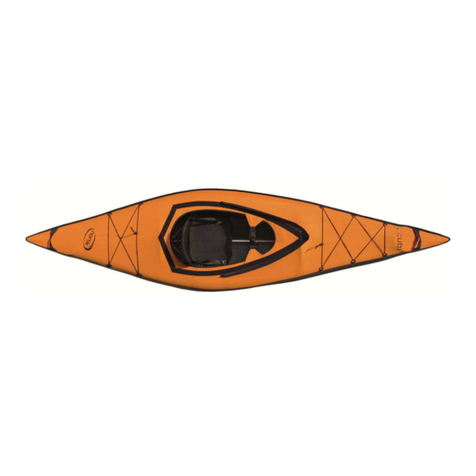
Nortik
Nortik Scubi 1 User manual
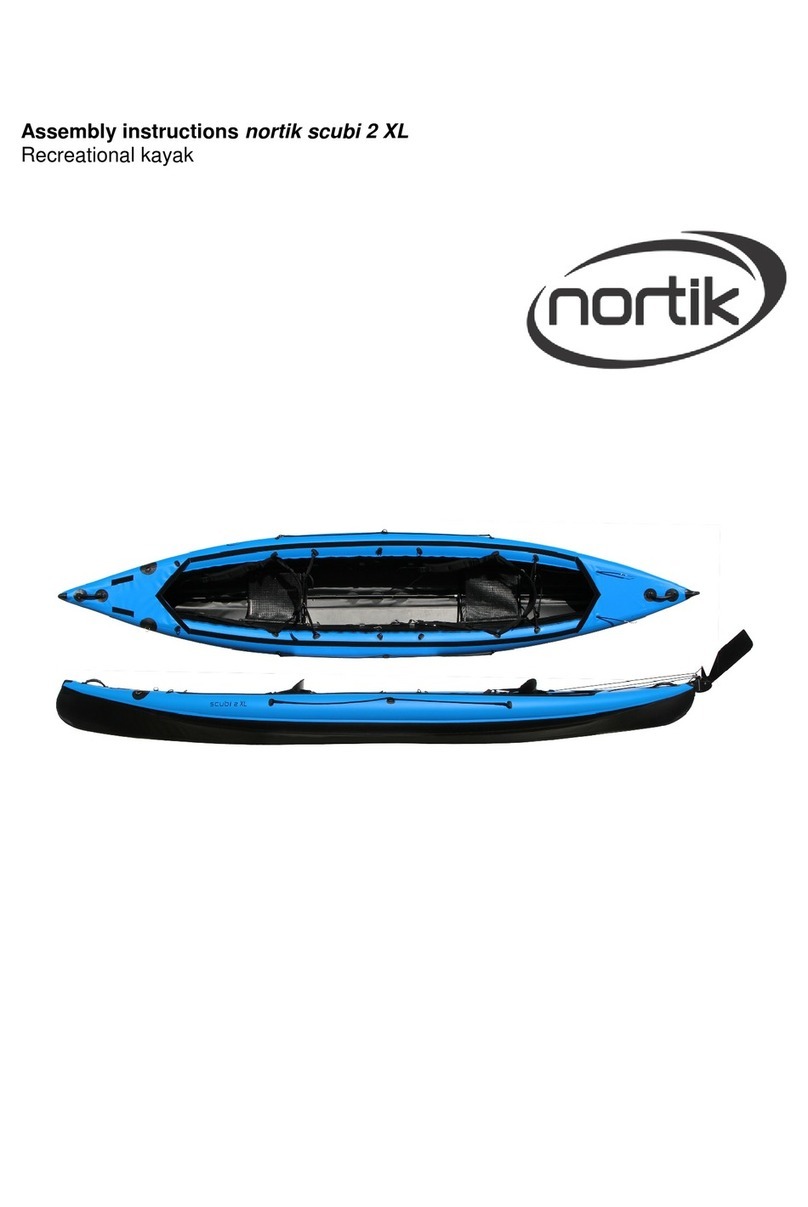
Nortik
Nortik scubi 2 XL User manual

Nortik
Nortik Scubi 2 User manual
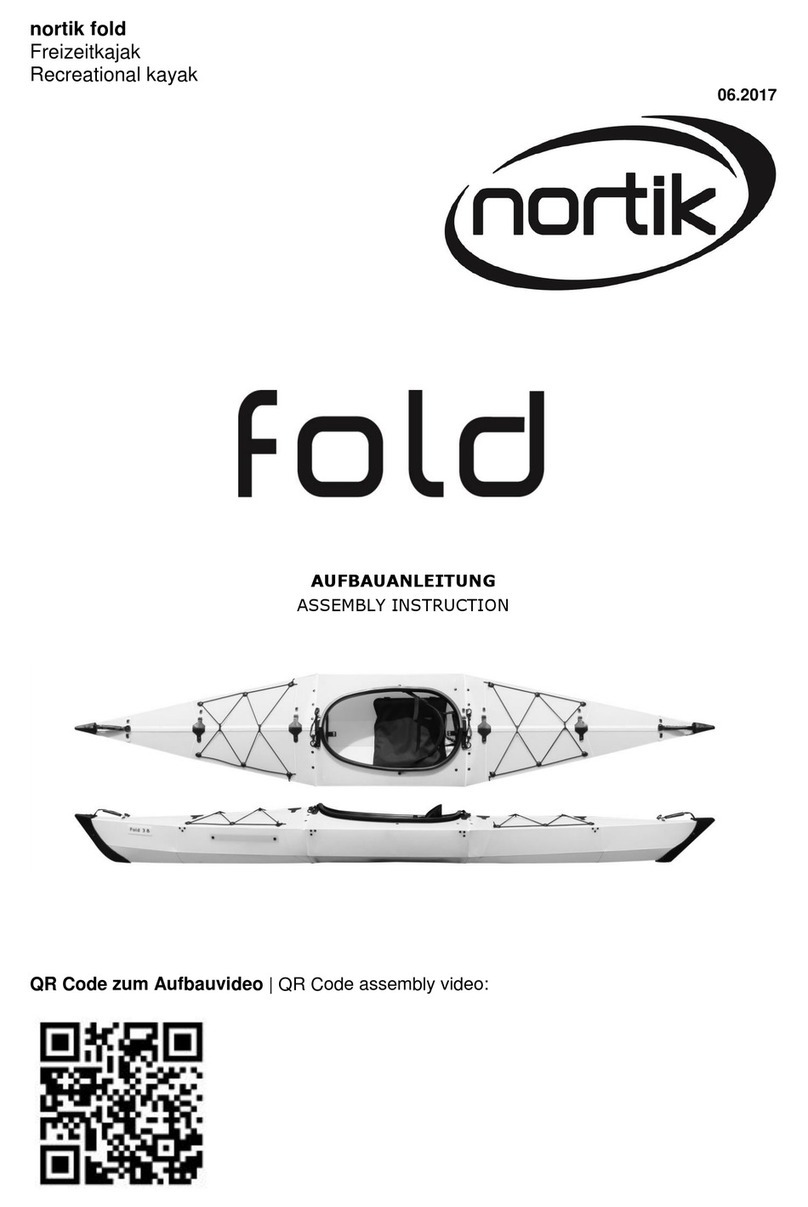
Nortik
Nortik fold User manual

Nortik
Nortik Fold 4.2 User manual

Nortik
Nortik Packraft TrekRaft User manual
Popular Boat manuals by other brands
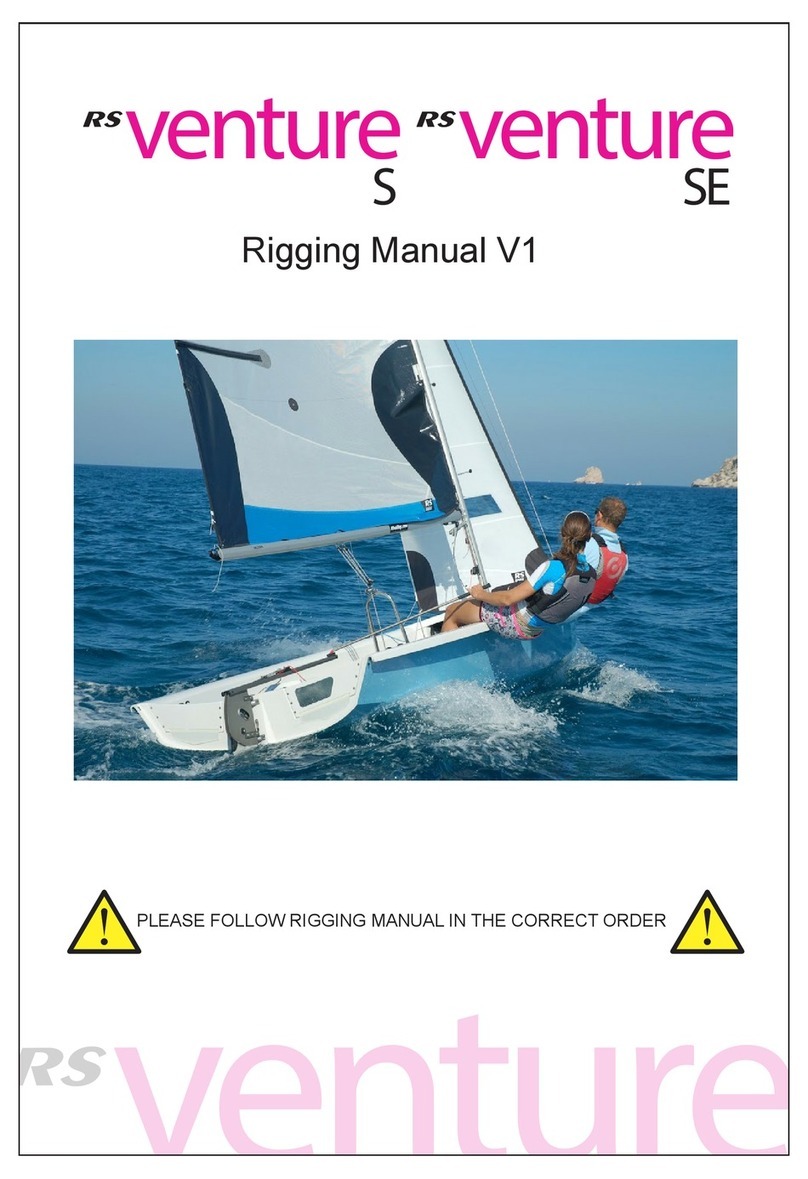
RS SAILING
RS SAILING Venture S Rigging manual
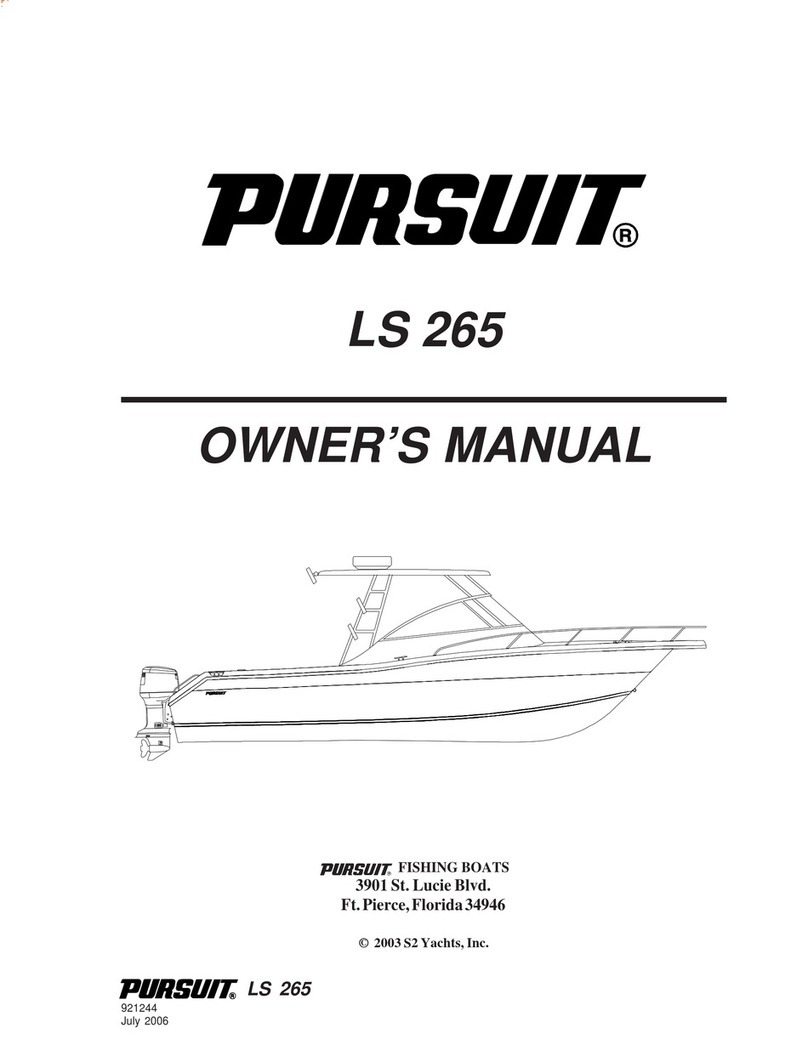
PURSUIT
PURSUIT LS 265 owner's manual

Pro-Line Boats
Pro-Line Boats 24 Super Sport owner's manual
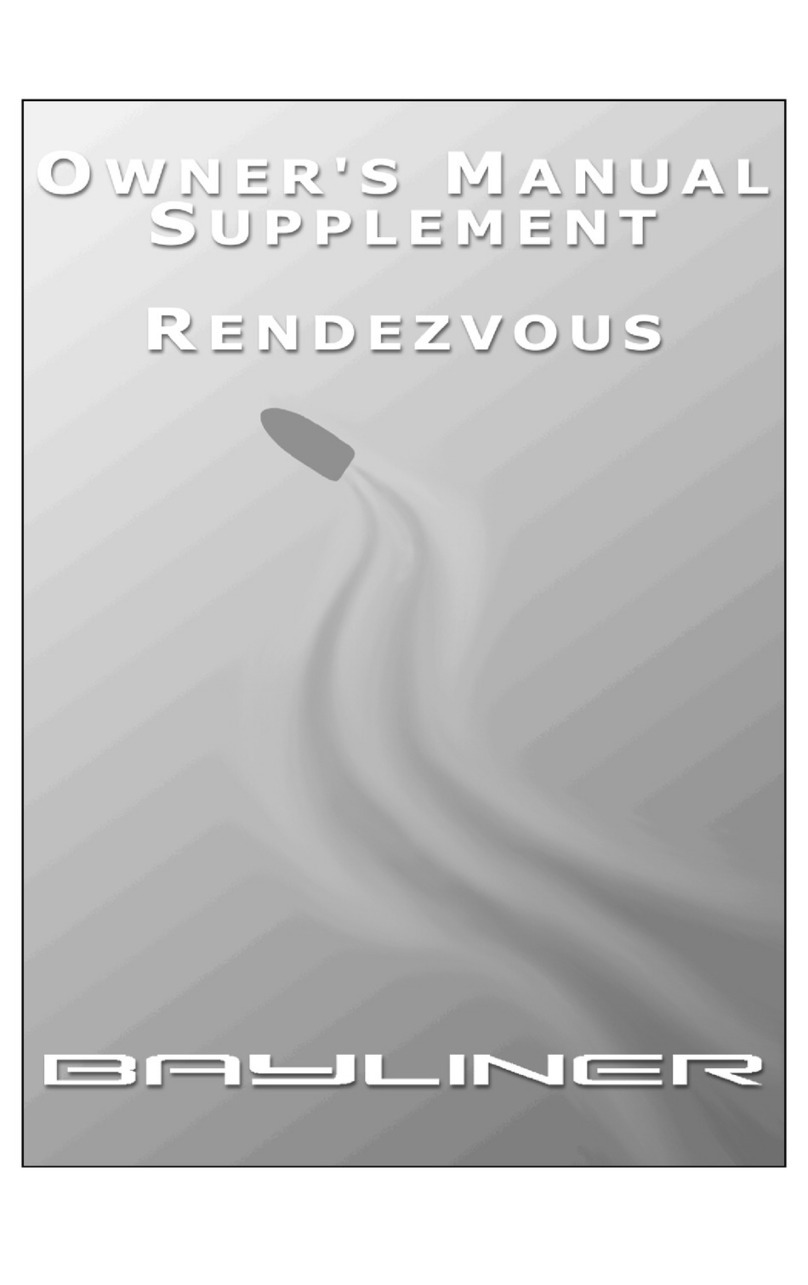
Bayliner
Bayliner Rendezvous Owner's manual supplement

Sea Eagle Boats
Sea Eagle Boats 10.6SR Instruction & owner's manual
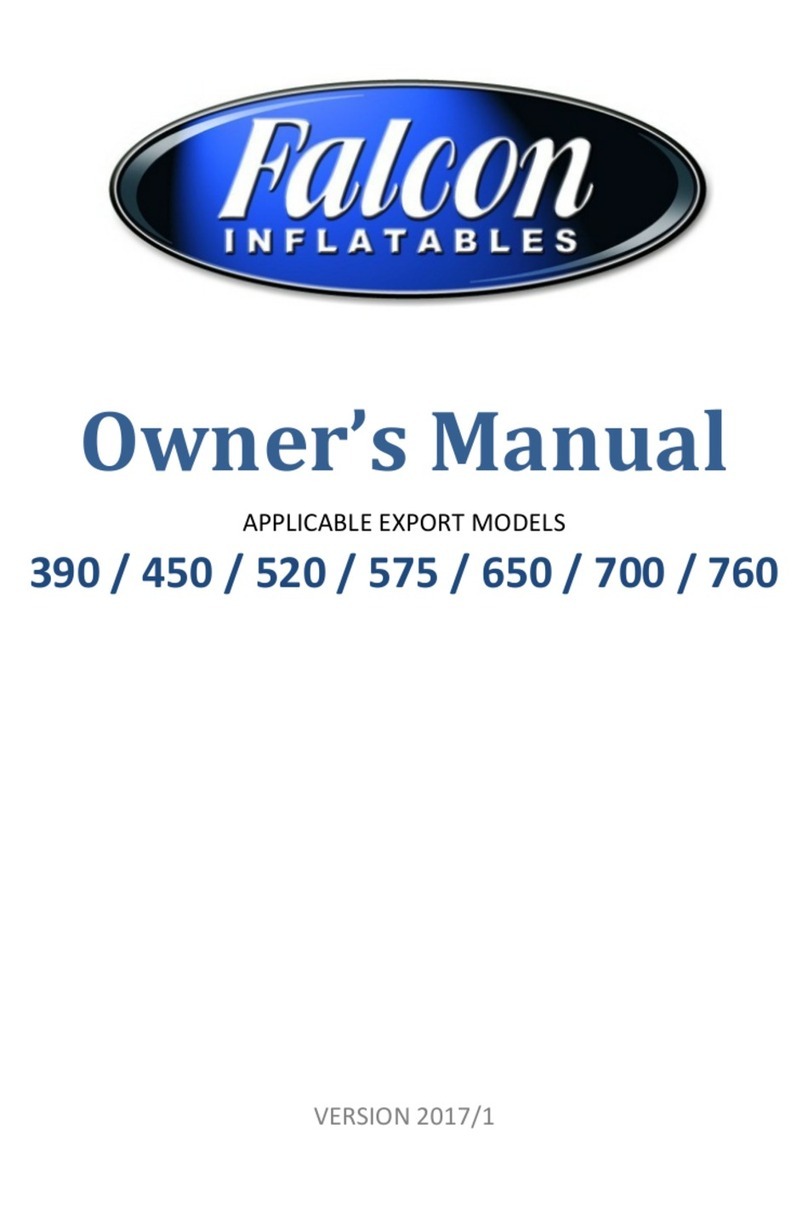
Falcon Inflatables
Falcon Inflatables 390 owner's manual
